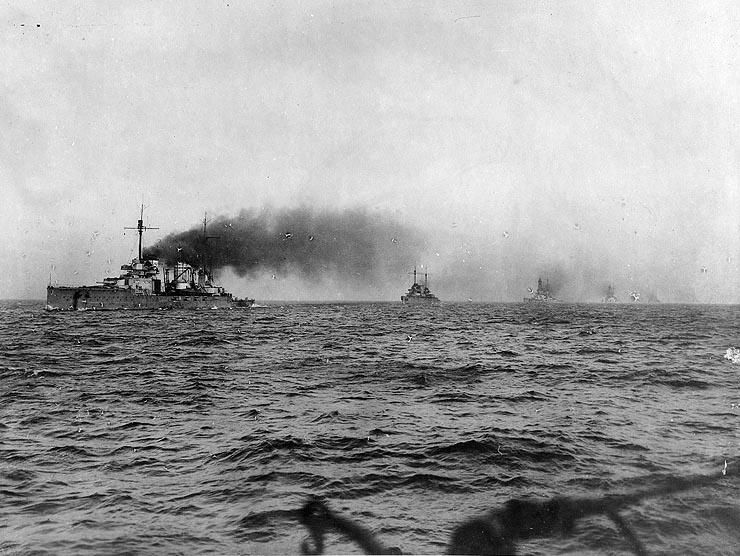
By the start of the First World War, the German Imperial Navy possessed 22 pre-Dreadnoughts, 14 dreadnought battleships and 4 battle-cruisers. A further three ships of the König class were completed between August and November 1914, and two Bayern-class battleships entered service in 1916. The battlecruisers Derfflinger, Lützow, and Hindenburg were completed in September 1914, March 1916, and May 1917, respectively.
Admiral von Tirpitz became the commander of the Navy. The main fighting forces of the navy were to become the High Seas Fleet, and the U-boat fleet. Smaller fleets were deployed to the German overseas protectorates, the most prominent being assigned to the East Asia Station at Tsingtao.
The German Navy’s U-boats were also instrumental in the sinking of the passenger liner and auxiliary cruiser, the RMS Lusitania, on 7 May 1915, which was one of the main events that led to the USA joining the war two years later in 1917.
Notable battles fought by the Navy were (up to the East Coast Raid of December 1914):
- Battle of Heligoland Bight (Rear Admiral Leberecht Maass) – 1914.
- Battle of Coronel (Vice Admiral Maximilian von Spee) – 1914. The German East Asia Squadron defeated the British West Indies Squadron.
- Battle of the Falkland Islands (Vice Admiral Maximilian von Spee) – 1914. The East Asia Squadron was defeated by a British battlecruisers.
You can read a much more detailed history on Wikipedia.

